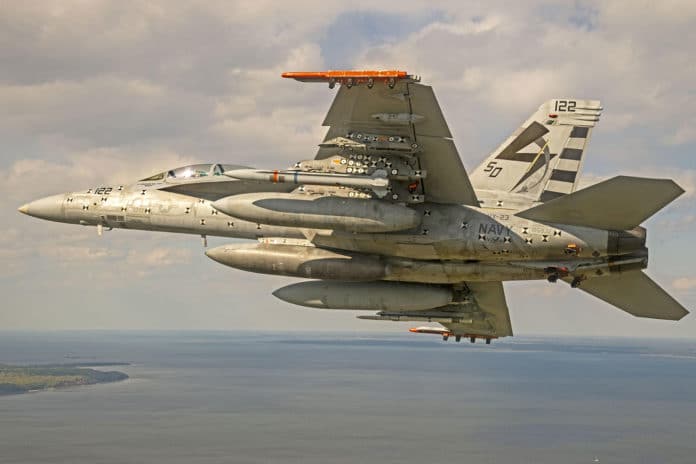The U.S. Navy has completed the first live-fire test of the new AGM-88G Advanced Anti-Radiation Guided Missile-Extended Range (AARGM-ER). The missile was launched from a F/A-18E/F Super Hornet and met all of the objectives set for this test.
The test took place on July 19 off the coast of Point Mugu Sea Test Range. “This first live-fire event is a major step to providing our fleet with the most advanced weapon system to defeat evolving surface-to-air threats,” said Capt. Alex Dutko, Direct and Time Sensitive Strike Weapon (PMA-242) program manager. “Our Navy and Northrop Grumman team has done tremendous work executing this event and ensuring we met all test objectives.”
The live-fire test validated the overall systems integration and the missile’s propulsion system and confirmed some of the simulations run on the missile. This was the first in a series of development test events that will ensure AARGM-ER can meet required objectives.
Northrop Grumman, the prime contractor for the AGM-88G, said that the live-fire test took place three months earlier than originally envisioned and demonstrated the long-range capability of the new missile design.
This firing marked a significant milestone for the program, as it is slated to enter Low Rate Initial Production (LRIP) this summer, which will support future deployment of the AARGM-ER to the fleet and initial operating capability. The Navy is integrating AARGM-ER on the F/A-18E/F Super Hornet and EA-18G Growler aircraft as well as the Air Force F-35A, Marine Corps F-35B, and Navy and Marine Corps F-35C aircraft.
“While this event serves as a validation of this hard work, it, more importantly, gets us one step closer to making our fleet more lethal,” said Felipe Jauregui, Anti-Radiation Missile Technical Project Office at Naval Air Warfare Center Weapons Division in China Lake, California. “Our engineering and test teams have worked tirelessly with their counterparts across the enterprise and government teams.“
